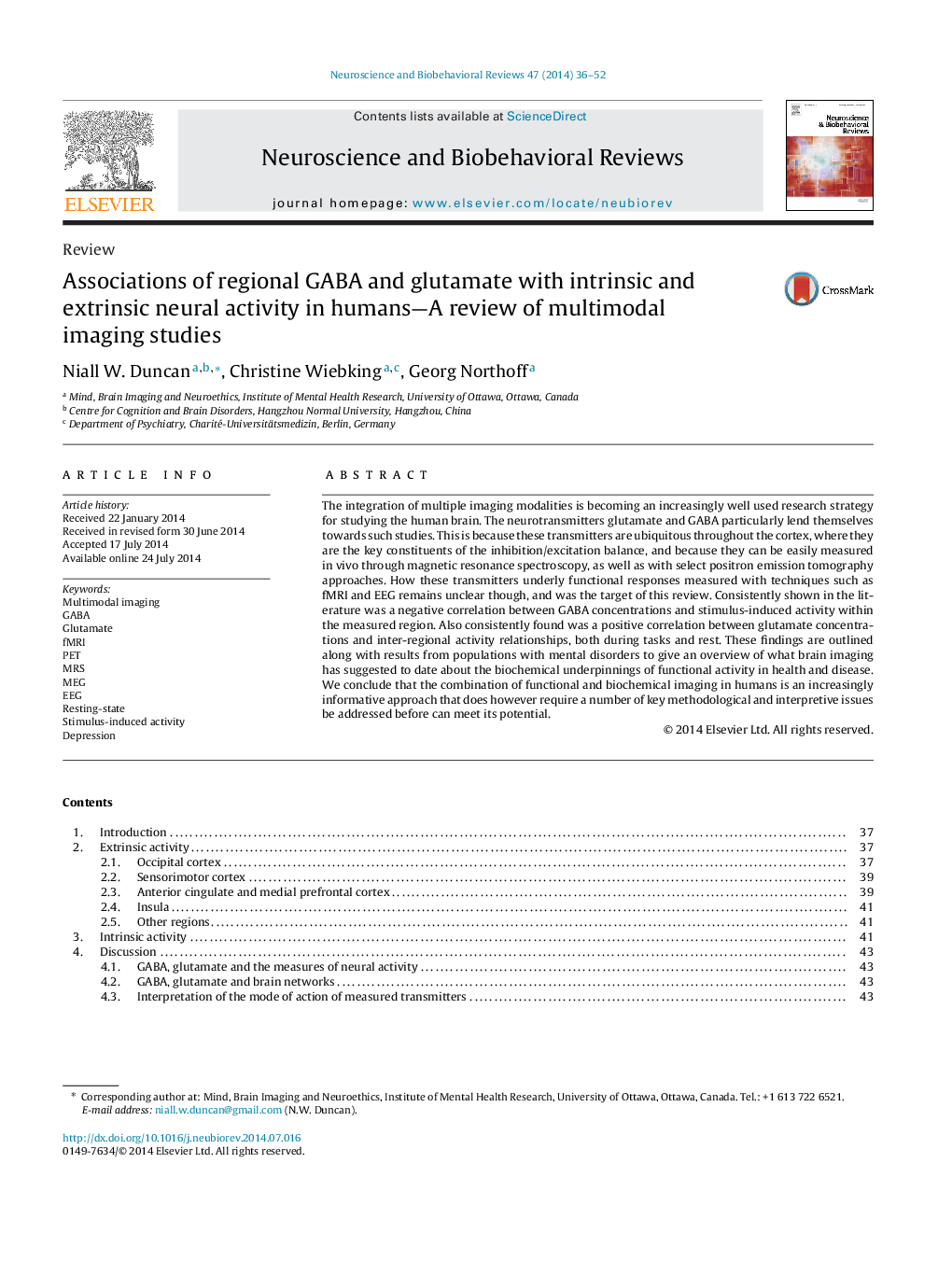| Article ID | Journal | Published Year | Pages | File Type |
|---|---|---|---|---|
| 7303710 | Neuroscience & Biobehavioral Reviews | 2014 | 17 Pages |
Abstract
The integration of multiple imaging modalities is becoming an increasingly well used research strategy for studying the human brain. The neurotransmitters glutamate and GABA particularly lend themselves towards such studies. This is because these transmitters are ubiquitous throughout the cortex, where they are the key constituents of the inhibition/excitation balance, and because they can be easily measured in vivo through magnetic resonance spectroscopy, as well as with select positron emission tomography approaches. How these transmitters underly functional responses measured with techniques such as fMRI and EEG remains unclear though, and was the target of this review. Consistently shown in the literature was a negative correlation between GABA concentrations and stimulus-induced activity within the measured region. Also consistently found was a positive correlation between glutamate concentrations and inter-regional activity relationships, both during tasks and rest. These findings are outlined along with results from populations with mental disorders to give an overview of what brain imaging has suggested to date about the biochemical underpinnings of functional activity in health and disease. We conclude that the combination of functional and biochemical imaging in humans is an increasingly informative approach that does however require a number of key methodological and interpretive issues be addressed before can meet its potential.
Related Topics
Life Sciences
Neuroscience
Behavioral Neuroscience
Authors
Niall W. Duncan, Christine Wiebking, Georg Northoff,
